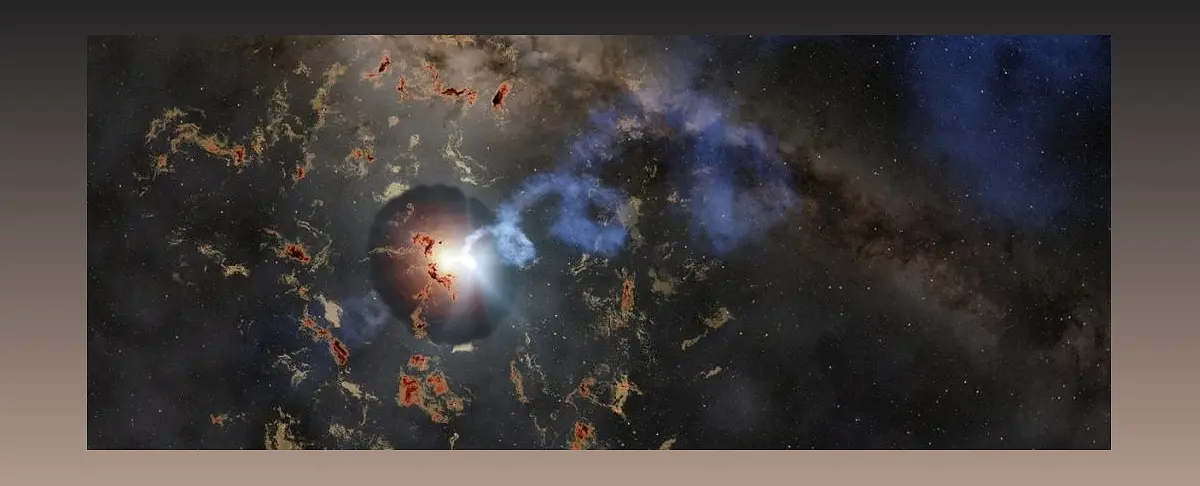In the vast expanse of the cosmos, a truly extraordinary event has unfolded. The Tasmanian Devil, an explosion observed a billion light-years away, has captivated scientists with its enigmatic behavior. This luminous fast blue optical transient (LFBOT) has defied expectations, flaring with the power of 100 billion Suns for months after its initial eruption. Join me, John Smith, an astrophysicist and content writer, as we delve into the fascinating world of LFBOTs and unravel the mysteries of the Tasmanian Devil.
Unveiling the Luminous Fast Blue Optical Transients
Explore the fascinating world of luminous fast blue optical transients (LFBOTs) and their unique characteristics.
Luminous fast blue optical transients, or LFBOTs, have perplexed astronomers since their discovery in 2018. These rare cosmic events exhibit extraordinary brightness, at least 10 times brighter than a typical supernova, and a bluish hue due to their high temperature. Unlike regular supernovae, LFBOTs flare up quickly and fade away within days.
Scientists believe that LFBOTs may be linked to the formation of black holes or neutron stars. The Tasmanian Devil, observed a billion light-years away, is a recent example of an LFBOT displaying peculiar behavior. It has been continuously flaring with the strength of 100 billion Suns for months after the initial explosion, defying our understanding of these enigmatic phenomena.
The Tasmanian Devil: An Unprecedented Observation
Delve into the unprecedented observation of the Tasmanian Devil explosion and its implications for astrophysics.
The Tasmanian Devil explosion, officially known as AT2022tsd, has left scientists astounded. This cosmic kaboom, detected a billion light-years away in 2022, has not only exhibited an initial burst of immense power but has continued to flare up with the same strength for an extended period.
A team of international astronomers, led by astronomer Anna Ho, conducted a detailed analysis of the Tasmanian Devil. Their findings suggest that the repeated flares may be linked to the formation of a neutron star or black hole. The short duration and extreme energy production of these flares push the limits of our understanding of physics.
Unraveling the Mysteries of LFBOTs
Uncover the ongoing research and theories surrounding the mysterious nature of luminous fast blue optical transients.
Astronomers have been tirelessly working to decipher the origins and mechanisms behind LFBOTs. While the formation of black holes in unusual core-collapse supernovae is currently the leading theory, each LFBOT presents its own unique characteristics and challenges.
The Cow, the first LFBOT discovered in 2018, exhibited a pancake-like explosion, unlike any other known supernova. The Finch, detected earlier this year, was found in intergalactic space, far from any galaxy. These peculiarities have prompted scientists to explore alternative explanations and delve deeper into the mysteries of these cosmic phenomena.
The Implications of the Tasmanian Devil's Behavior
Examine the significance of the Tasmanian Devil's prolonged flaring and its potential insights into the life cycles of stars.
The Tasmanian Devil's unprecedented behavior provides a unique opportunity for astronomers to study the properties of newly formed corpses, such as neutron stars or black holes. These flares, defying our expectations, indicate that these remnants of stellar death are not merely static objects but remain active and dynamic.
By studying the flaring patterns and energy production of the Tasmanian Devil, scientists hope to gain insights into the intricate processes occurring during the formation and evolution of these compact objects. This newfound understanding could revolutionize our knowledge of the life cycles of stars and the role of black holes in the cosmos.

